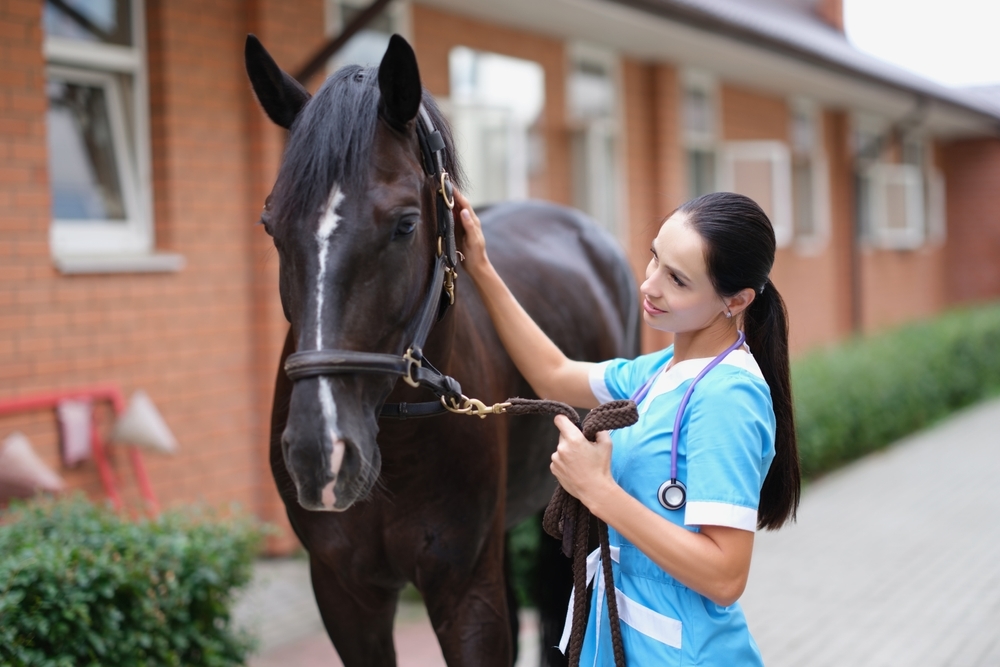
📖 Table of contents
Medical studies in Austria
MedAT - the entrance test for medical studies in Austria
If you are Austrian or interested in studying medicine in a German-speaking country, you have probably already come across the MedAT, the Austrian entrance test for medical studies. It consists of a test of basic scientific knowledge and various cognitive performance areas, all of which can fortunately be easily practised. As the A-level average in Austria does not count for admission to medical school, but only your test performance, the competition is fierce and you should bring motivation and perseverance with you.
Is it worthwhile for you to take part, what exactly does the test look like, what do you need to bear in mind when registering and what tips are there for preparation? You can find out all this in the following text.
Are you interested in studying medicine?
We will be happy to advise you free of charge about your options for studying medicine, including advice on studying medicine in another EU country, which is fully recognised in Germany and Austria.
Where can I study medicine in Austria?
In Austria, you can study both human medicine and dentistry. Successful completion of the MedAT-H (human medicine) and MedAT-Z (dentistry) is mandatory for a place at university. You can study human medicine in the cities of Vienna, Innsbruck, Graz and Linz and dentistry in Vienna, Innsbruck and Graz. A total of over 1800 study places are available each year.

Together for success - futuredoctor and studying medicine abroad
Do you want to study medicine abroad and are looking for the most suitable university for you and don't really know where to start looking for the right country and a good university? futuredoctor is happy to support you!
Besides the Student advisory service In addition to selecting the university and accompanying you to the desired on-site appointments, futuredoctor also offers support during the application process and preparation for possible aptitude tests, as well as orientation at the place of study - including the search for accommodation! Get your application quickly and easily free info pack!
Should I take the MedAT?
The MedAT is compulsory for all those who are considering studying medicine in Austria.
If your A-level average is not good enough to study medicine in Germany, the TMS did not work out so well, you simply need a backup plan or you are particularly keen to study in Austria, taking the MedAT is a good idea. However, it should be noted that it is highly unlikely that taking the test "on the off-chance" will get you the university place you are looking for. If you are registered but have not managed to prepare, you can still try out the test and get a taste of the "test air".
In order for the MedAT to work out, you should ideally have at least 2-3 months to prepare. You can find out more about preparation further down in the text!
When, where and how often can I take the MedAT?
The MedAT takes place once a year simultaneously at all Austrian medical universities on the first or second weekend in July. You can repeat it as often as you like. You can find official information on the page www.medizinstudieren.at .
How does the quota system work?
The quota system is intended to ensure that EU prospective students and Austrian prospective students in particular are entitled to a higher proportion of places. The MedAT-Z has not had a quota system since 2018.
In the MedAT-H, 75% of the study places at each university are filled by the best Ö-quota participants. A further 20% of study places are then filled between the best participants in the EU quota + other participants in the Austrian quota. The remaining 5% will be allocated between participants from all quotas, including non-EU countries.
In Vienna, instead of competing with Austrians (and some non-EU participants) for 680 human medicine study places, all German participants are only competing for 170 study places (25% of the places).
How do I register for the MedAT?
Registration takes place online via the page www.medizinstudieren.at and is open from 1 - 31 March (as of 2023). You do not need to present a degree certificate to register. However, it is important that you submit your Processing fee of € 110 (as at 2023).
Please note that when you register for the MedAT, you must already choose the city in which you would like to study. Once you have registered, it is unfortunately no longer possible to change your mind. The MedAT will then take place in your chosen city. Of course, you can also register for several cities and then decide shortly before the test in which city you want to take the test. The disadvantage, however, is that you will have to pay the full fee for each registration.
Tip: If you have decided to take the MedAT, you should definitely mark all important deadlines (e.g. registration period, payment period, test day) in your calendar - perhaps directly above your desk - and first carefully consider and research how much time and buffer you want to invest in preparation, which materials you want to use, etc. before you invest in exercise books or online programmes.
What does the test day look like?
It starts early in the morning, usually between 7:00 and 8:00 depending on the location.
Firstly, you register and hand in any unnecessary or forbidden items in the cloakroom. The queues to get in are usually long and so the start of the test is often delayed until at least 9.00 a.m. At around 12.00 p.m. you then have a 60-minute lunch break - take something to eat with you! And then you can breathe a sigh of relief by 17:00 at the latest.
Be on the safe side and follow the instructions on your official invitation exactly: You will receive these on your MedAT account around two weeks before the test day. It will tell you exactly where you have to be when and what you are (not) allowed to bring with you. Now you can organise your accommodation and travel arrangements. It's best to plan a generous time slot and arrive the evening before.
Tip: Don't let yourself be impressed! The number of participants is large and it is easy to be put down and stressed by the comments of others. How someone assesses their own performance or the difficulty of a test is very subjective. It is common for people to brag about their preparation or how easy a part of the test was. Participants' self-assessments vary greatly, depend on many factors and are often incorrect. Trust in your preparation and your strengths and simply avoid people who stress you out.
How is the MEDAT assessed?
You work on tasks in each task area and receive points for the correct answers. The points are weighted depending on the task area (e.g. weighting BMS = 40% means multiplying the number of points by 0.4, etc.) You will be given a place on the ranking list based on your total number of points. Depending on the quota, the study places are allocated to the best participants. It is therefore about the relative result compared to the other participants at the test location and test time and you are allowed to make mistakes. With 70%-80% of the points, the chance of getting a study place has always been very high.
How is the MedAT structured?
The MedAT consists of 4 large blocks: BMS (basic knowledge test for medical studies), TV (text comprehension), KFF (cognitive skills and abilities) and SEK (social-emotional competences).
The biggest difference to the TMS:
In contrast to the TMS, it is not enough to "only" prove your cognitive abilities in the MEDAT. Here, applicants are also tested in their basic scientific knowledge. This does have the disadvantage that you have to study hard and, above all, for longer to have a good chance. On the other hand, the knowledge makes it easier to start your studies and you also train other skills that are important for studying medicine: dealing with a large chunk of learning material, keeping an overview and keeping your head above water on frustrating days. Above all, you get to know yourself and your strengths and weaknesses!
Overview of the contents of the MedAT:
BMS
Let's start with the Basic knowledge test for medical studies (BMS). The test uses an MC format to test knowledge of the scientific subjects of biology, chemistry, physics and maths. The test lasts 75 minutesconsists of 94 questions and becomes 40% weighted.
TipThe respective universities provide so-called keyword lists of the VMC (Virtual Medical Campus). You should stick to the topics mentioned here. Preparation books can help you to acquire knowledge that is neither too superficial nor too detailed.
Text comprehension
This is followed in Medat-H (human medicine) by the Text comprehension testwith 35 minutes time. Here you read 4-5 texts on an unfamiliar topic and then answer 12 MC questions. The test alone counts for a whopping 10%, so you can score points here!
The dentists have instead carried out the test Manual skills (MF) with the sub-areas "Mirroring shapes" and "Bending wire". There is 30 minutes for each of these subtests.
On the test day, these tasks are followed by a well-earned hour's lunch break.
KFF
Freshly fortified, we now continue with the large test area Cognitive abilities and Skills (KFF). In Medat-H your efforts are weighted with 40%, in MedatZ with 30%, as the test "Recognising implications" is not included.
In the tricky sub-test "Assembling figures" is designed to test your spatial imagination. Snippets of a geometric figure are shown here and you have to choose which geometric construct they can be put together to form. You are given 20 minutes to complete 15 tasks.
TipThis test can be difficult at first. As with all tests, it helps to think of a good standard procedure. And then it's a case of practise, practise, practise.
Subsequently, the subtest "Allergy cards" puts your memory and retention skills to the test. The aim here is to memorise several sets of 8 pieces of information ("allergy card") in a short space of time. There are 8 cards whose information you have to memorise as well as possible in a total of 8 minutes. You will then be asked to recall the cards a few subtests later.
Tip: This sub-test counts the most in the KFF section. And full marks can be achieved even without a photographic memory. One option that is promising for many, is fun and is easy to practise is to pack all the information into a story that is as absurd as possible - the main thing is that YOU can remember it!
In the sub-test "Number sequences" a sequence of 7 numbers must be logically supplemented by 2 numbers. There are 15 minutes for 10 tasks. In principle, it is only a matter of applying the basic arithmetic operations (plus, minus, times, divided) and recognising many possible number sequences through preparation. With a little practice, this subtest is no problem!
In the sub-test "Word fluency" challenges your speed, your ability to make associations and your flexibility. You have to form a word from 6-10 given letters and you have to indicate which letter is the first. You have 20 minutes for 15 tasks. Here, too, it is important to practise and not get too fixated on one possible solution!
Now follows the Reproduction phase of the memory test. 25 questions about the 8 allergy cards must be answered in 15 minutes.
In the sub-test "Recognising implications" you prove your ability to reason logically. You are given 10 tasks and have 10 minutes to complete them. The task is to derive a conclusion from two premises describing the relationship between objects (e.g. "all x are y", "some y are not x"...).
Tip: Try to visualise the statements graphically using circles. Then add the two premises together as a graph and, with a little practice, you can read off the correct answer almost playfully. You can also replace the objects with variables if this helps you.
Finally, the test area follows Social-emotional competences. Even if it might be tempting to work on these tasks "by feel", it makes sense to train yourself to think the way the test developers want you to. The area is weighted with 10%.
In the Subtest "Regulating emotions"which was newly introduced in 2023, is about finding the best and most targeted strategy for a difficult emotional situation from the various solution strategies on offer - according to current research. There are 12 example scenarios that are answered in 18 minutes.
In the sub-test "Recognising emotions" is about predicting the emotions of a person in a certain situation. In each example, you are given a description of the situation and 5 emotions for which you have to assess whether they fit the situation or not. All emotions must be assessed correctly in order to get the point. This test is based on various theoretical models that you should be familiar with in order to recognise the answer you are looking for. You have 14 tasks to answer in 21 minutes.
In the sub-test "Social decision-making" you have to put yourself in a situation description and then categorise 5 different courses of action according to their moral relevance. This can be quite tricky, but with practice and some background information, it's easy to master. Again, you have 21 minutes to complete 14 tasks.
When should I start preparing?
Everyone starts with individual prior knowledge and a different idea of how many hours are learnt on a learning day. Think about how much time you can and want to invest before you start the preparation phase. 2 months preparation time with a bit of a buffer is recommended in any case, you should not plan more than 6 months. This is because the brain needs time to learn the facts and train, and you can be more relaxed and effective with the material if you know that the time is not too short. Too long a preparation phase could also end in a motivational hole or plateau - it's important to find the right mix of relaxation and pressure.
How do you prepare properly for the MedAT?
As already mentioned, good preparation can look very different depending on the type of learner and free capacities. However, here are a few tips that you can use as a guide:
- Learn from the start with a Learning plan. This will help you to stay motivated, work on all topics systematically and stay on schedule. Don't do much more or much less than is written in the study plan. And it's best to put it up large on a wall.
- Find the right Materialsn. There are countless great offers on the internet. The most important thing is that you decide on a method and then stick with it. The method should suit your time and budget and your learning preferences.
- Be pragmatic- only delve as deeply into an area as is useful for the test.
- Assume Simulations part! The benefits of test simulations have been proven by studies. Simulation means working through a MedAT test day in a situation that is as similar to an exam as possible. You can do this alone, but also in groups.
- Concentrate on yourself! Each of us has individual strengths and weaknesses, a different pace and a different constitution. Some weaknesses are great to work on, but it's also okay to accept that some learning strategies or topics don't suit you. Be proud of your progress and what you are good at!
- Think of a good Alternative plan, to stay relaxed. Many pass the MedAT at the second or even third attempt. But there are also opportunities outside of Austria to fulfil your dream of studying medicine. You can find all the information you need about studying medicine abroad on our website. Perhaps this could be your ticket to studying medicine?
Ready to start?
Hopefully we have been able to give you a brief overview with this article and make it easier for you to get started. Let us know if you still have any questions or book a free consultation with our student advisors, who can give you further advice on your path to studying medicine. We'll keep our fingers crossed for you!
Frequently asked questions
FAQs on studying medicine in Austria
What are the advantages of the MedAT compared to the TMS?
Advantages:
-Final grades are irrelevant for the chances of admission afterwards
-good preparation pays off!
-repeatable as often as required
Disadvantages:
-Higher competition
-long, time-consuming preparation
-only one date/year
-Application to one university only
-long journey for the test
When will I receive my results?
Depending on the university, the results will be uploaded from the beginning of the 32nd calendar week.
Can you pass the MedAT the first time?
Yes!
What percentage pass the MedAT?
Roughly speaking, about one in ten. More precisely, the chance depends on the number of applicants, the number of study places and your own quota (Austria, EU or non-EU). The chances of admission vary greatly from university to university, even for the different quotas. Innsbruck, for example, is very popular with German students, so the chances here can be quite good for Austrians and worse for non-Austrians. However, as you need an above-average result anyway, this is not so important.
How many hours does the MedAT take?
The MedAT takes 4-5 hours. However, the official test times cannot always be adhered to, so you should allow sufficient time for travelling to and from the test.
Who can take the MedAT?
All those who have completed the last school level (Matura/Abitur in the same summer) or already have a Matura/Abitur certificate and have completed the online registration including timely transfer of the fee.
How much does the MedAT cost?
The current cost contribution is 110 euros and must be transferred on time after registration.
What do I need to bring to the test day?
The following also applies here: Pay attention to your test invitation, the lists differ depending on the test location. Your test invitation, a valid, official photo ID and, depending on current regulations, possibly an FFP2 mask are mandatory. You may need a lot of things, such as snacks and lunch in suitable packaging, a jumper and a bottle of water, which you are allowed to take with you into the hall. However, it is important to read exactly what you need on the invitation. not You can bring any kind of watch, pens and writing utensils, but also items of clothing such as hats or scarves and lucky charms (please note: this list is NOT exhaustive, the most reliable information is always provided by the current year's invitation). Also check whether there is a cloakroom at your test location where you can leave things and whether or not you can pick something up there during the lunch break.
Are preparation courses worthwhile?
Preparation courses sound tempting: learn everything you need to know in just a few days? Unfortunately, studies show that they have no effect on the MedAT result. Test simulations, on the other hand, have been proven to help you achieve a better result!
Where can I find the important information on the Internet?
How many attempts do you have on the MedAT?
You can take the MedAT as often as you like.
I didn't get a place on the MedAT. What now?
It hurts when things don't go as well as you would have liked or perhaps even managed. But you can remind yourself that the MedAT really only makes a statement about a specific performance on a specific day. In any case, you have gained a lot of valuable experience from your attempt and can look positively to the future! Your options are infinitely varied and you will soon regain your courage. Take a look at your strengths and weaknesses. Take a break from the MedAT and think about other things that you enjoy. In the time until you try again, you can learn and experience an incredible amount and start out as a stronger person. Perhaps you would like to delve into the depths of the molecular foundations of medicine in a science degree programme or experience how medicine works in practice in an apprenticeship. Or you might be thinking about something else - for example, your path to becoming a doctor could take you to another EU country. We will be happy to advise you and work with you to find the right path to a place at medical school!
Starting shot
What are you waiting for? 🎉
Order your information package now, find out about studying medicine abroad and get started as a medical student!





